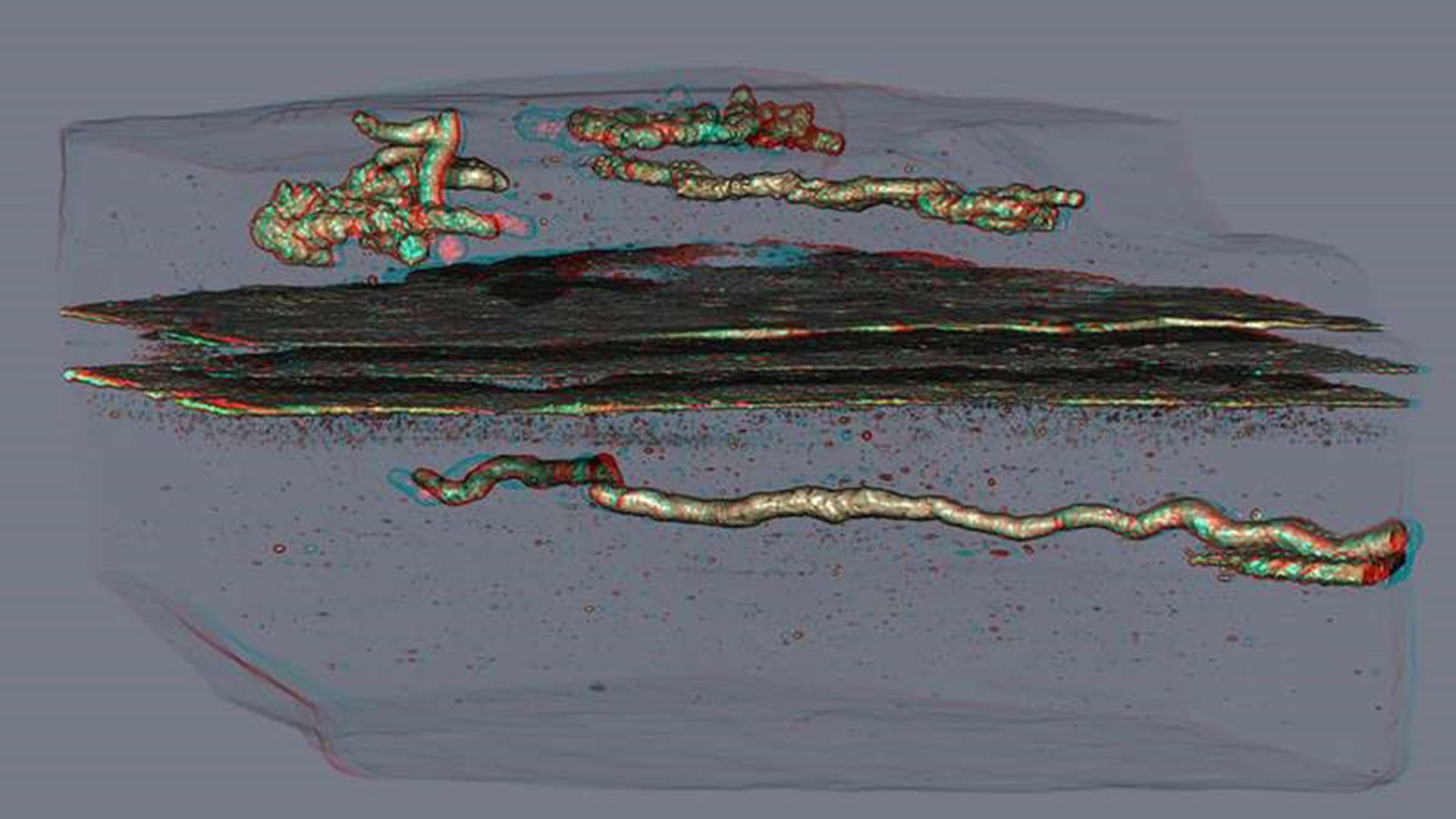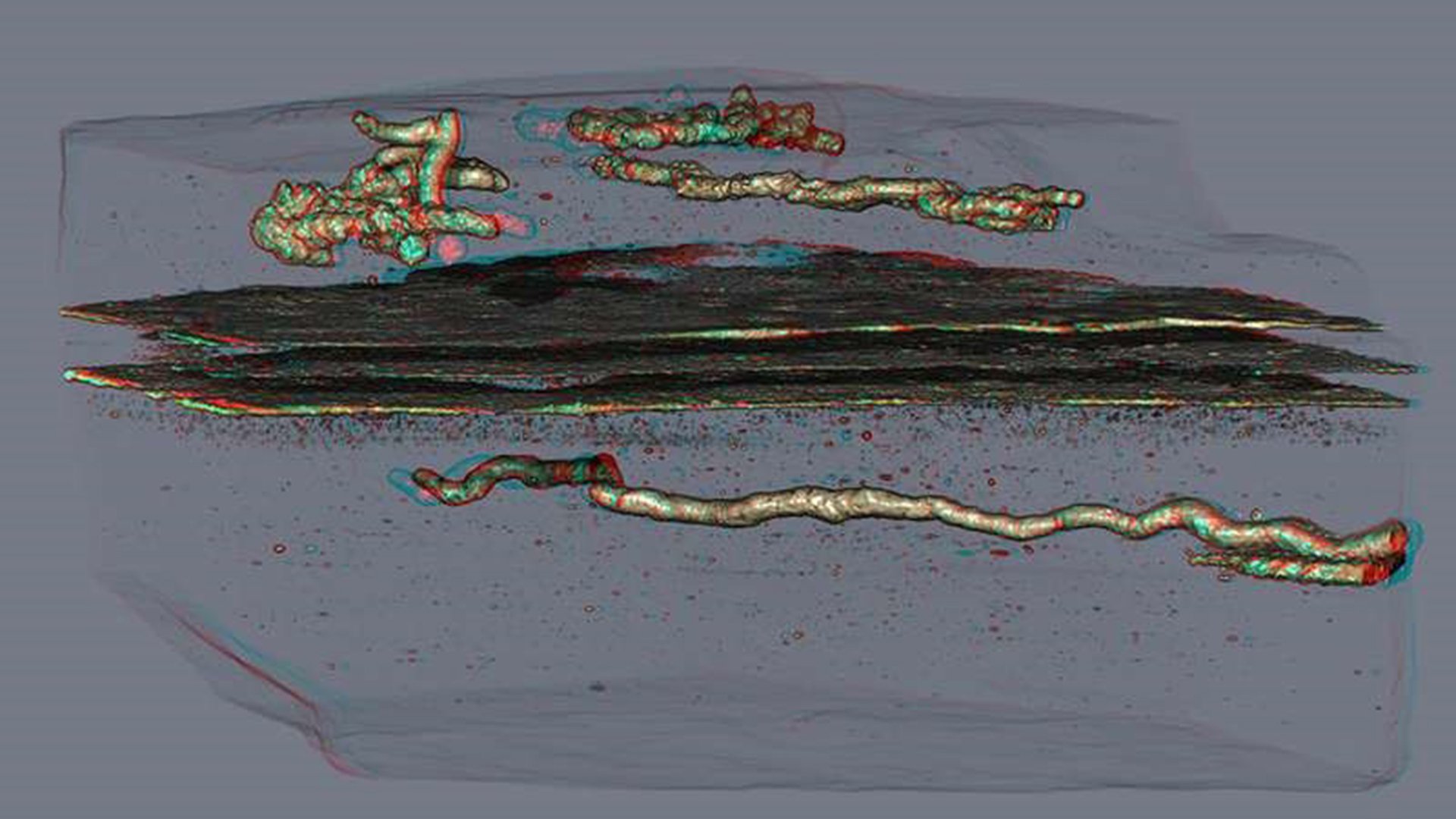Ancient amoeba
Researchers from the University of Poitiers in France discovered a fossilized system of tunnels in 2.1 billion-year-old rocks in Gabon. According to the team, these tunnels – which are a few millimetres in diameter – can only have been dug by complex, moving microbes. This means that complex forms of motility (the ability to move) may have evolved hundreds of millions of years earlier than previously thought. While this discovery could very well change our view of how life on Earth evolved, much remains unclear. The Gabonese fossils are only traces left by microbes, not the microbes themselves, and the researchers can't say exactly what kind of microbes dug the tunnels. They were most likely made by a species of amoeba. The tunnels were found near large quantities of bacteria, on which the mysterious amoebae likely fed.

A 3D-scan of the tunnel system. Photo: University of Poitiers
With or without a nucleus?
We don't know for certain whether these mysterious amoebae dug the tunnels. It could also have been a multicellular eukaryotic organism (whose cells contained a nucleus). So far, the earliest eukaryotic fossils ever found are 1.7 billion years old, making them a good deal 'younger' than the motile organisms that left the trace fossils discovered in Gabon. The age of the fossils means it is also unlikely that we are dealing with a multicellular organism, as these complex forms of life evolved less than one billion years ago. However: the researchers did, in fact, find traces of other multicellular lifeforms in the same 2.1 billion-year-old rocks. These were not eukaryotic cells, but simple prokaryotic cells (which lack nuclei) that had clumped together.
New perspective
The tunnel system dates from a particularly hospitable period when oxygen levels were relatively high. This makes it considerably more likely that more complex, multicellular organisms evolved here some 2.1 billion years ago. When this hospitable period ended, oxygen levels plummeted and it is likely that the organisms vanished once more. Despite many unanswered questions, the researchers' hypothesis is certainly within the realm of possibility and the newly discovered fossils offer a new perspective. The only thing to do now is await conclusive evidence.
Source: PNAS

